F1工程师-阿拉斯泰尔-吉布森设计碳纤维鱼
By www.carbonfiber.com.cn
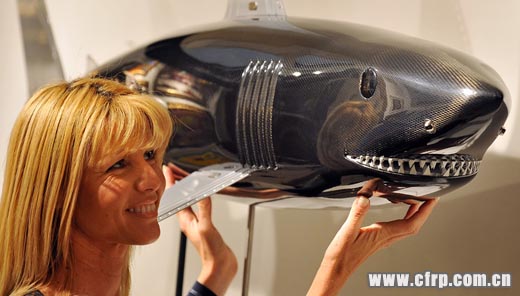
阿拉斯泰尔·吉布森原来是本田车队的工程师,现在改行设计碳纤维鱼。这到底是怎么回事?让我们来一探究竟。 阿拉斯泰尔·吉布森的门吸在我眼中应该能算得上世界首酷了。走进这位艺术家的工作室,这个小玩意儿迅速吸引住了我的眼球——它其实是来自D C -3 飞机的连杆。作为超级细致的前F1 首席工程师,阿拉斯泰尔·吉布森并没有把门吸贴在地板上。这个镀铬连杆被巧妙地安装在门边上。
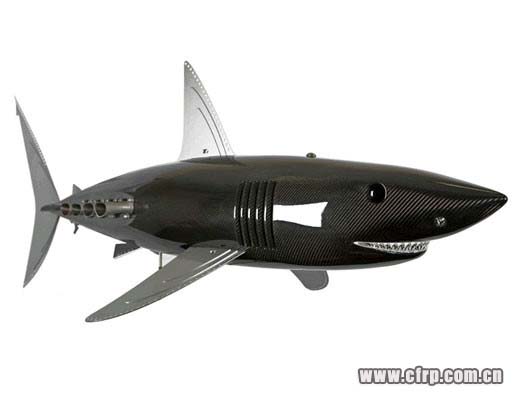
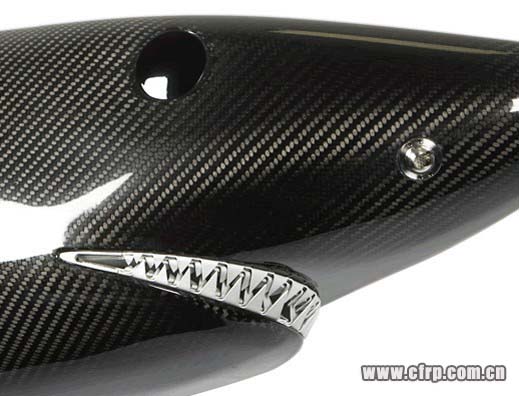
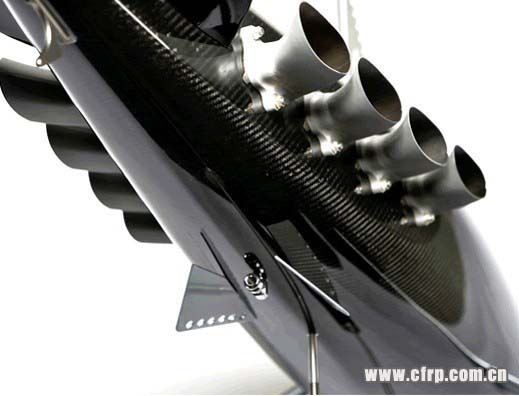
的那条超现实主义风格的碳纤维鱼,似乎随时准备猛咬你一大口。它的材料来自本田F1 赛车的废弃零部件,但做工精美细致。从门吸到工作室里的一切细节布置,无不牢牢地抓着我的视线,一时间我的大脑有些短路。
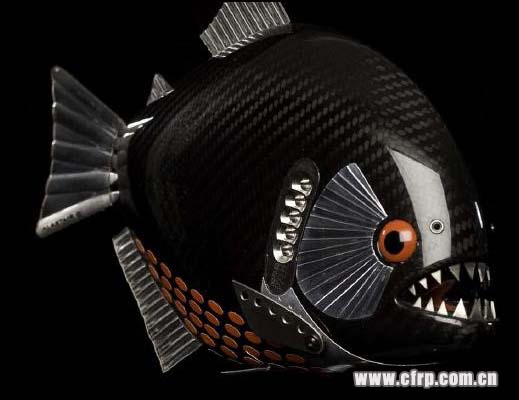
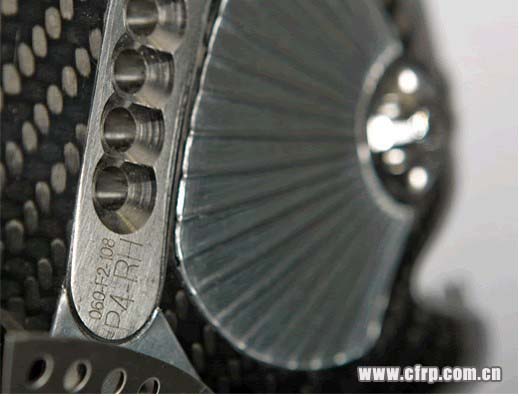
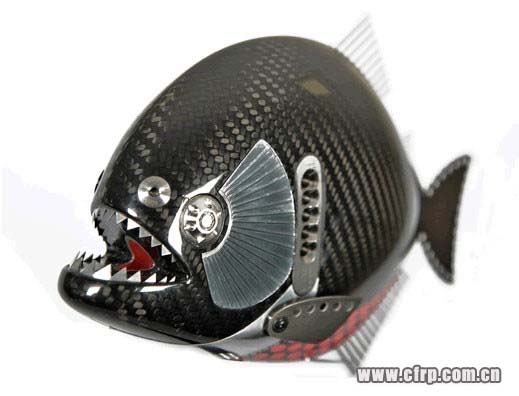
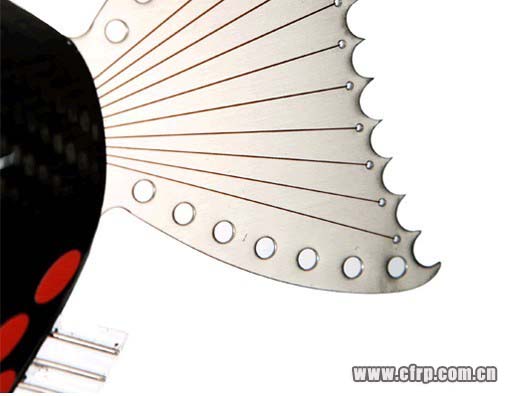
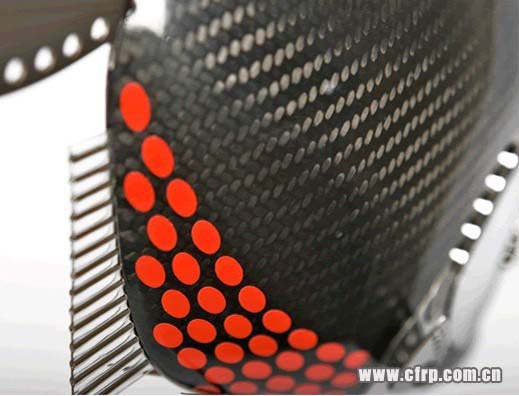
阿拉斯泰尔·吉布森的F1 生涯让他拥有了出众的技术知识,这一点对他制作千奇百怪的艺术品而言至关重要。阿拉斯泰尔·吉布森利用废弃的本田F1 赛车零件来打点细节, 因此装有变速器零件(当然,每一个都有编号)的盒子随处可见—食人鱼的鼻孔由车身上的扣件制成,牙齿是铝制的,身下的支架则来自旧的换挡杆。他对所有素材的了解令人叹为观止,对每一个部件的位置都了如指掌。
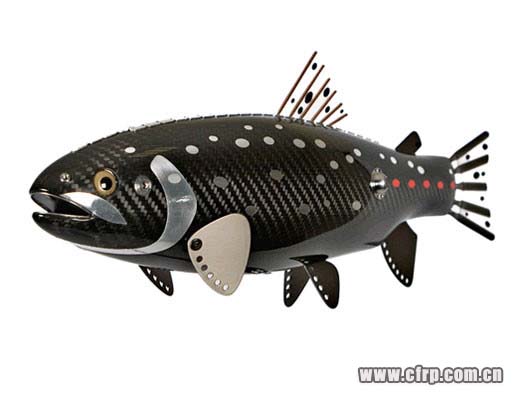
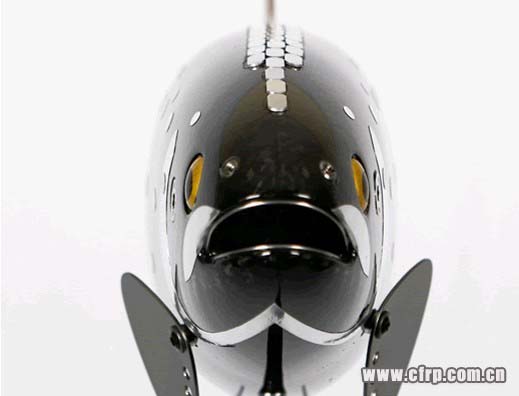
找到这些零件其实花不了多少时间。目前,他仍然会在每周抽出1 天的时间来为本田担任顾问,因此可以轻松获取各种多余的零件。制作各式各样的模具并最终构造出碳纤维模型的形状才是最花时间的。首先,阿拉斯泰尔·吉布森用一种轻质木材雕刻出基本的形状,这只需一把小刀即可完成。对于30 厘米长的食人鱼,这个过程很容易,阿拉斯泰尔·吉布森还打算在这个夏天制作一条长达两米的灰鲭鲨。“在雕刻的过程中,需要很强的自制力,否则很快就会焦躁不安,最后只能雕出一根巨大的牙签。”
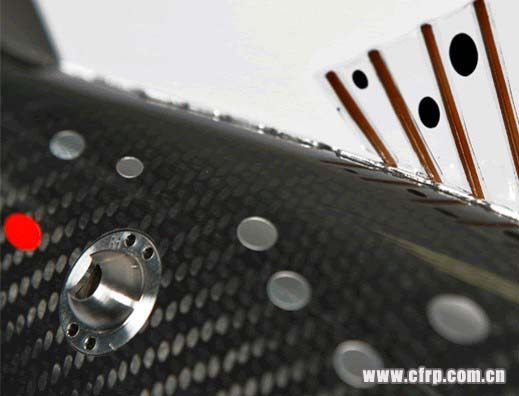
不过这种轻质木材不能直接用来制做碳纤维的模具。把轻质木材用碳纤维包起来,放进用于蒸煮工业材料的高压锅,压力会把木材压平。所以阿拉斯泰尔·吉布森先用计算机分析木质鱼的原型,然后把坐标值输入铣床,通过铣床将一团高科技的T B 650 树脂塑造成鱼形。这样就有了最终的模具,在里面衬入经过预先处理的碳纤维,放进高压锅里,分别铸出鱼身的两半。能理解吗?好,接下来把表面打磨光滑,填充进可膨胀的塑料泡沫,再把两半粘起来,将废弃的F1 赛车零件装饰在上面。碳纤维鱼就做好了!
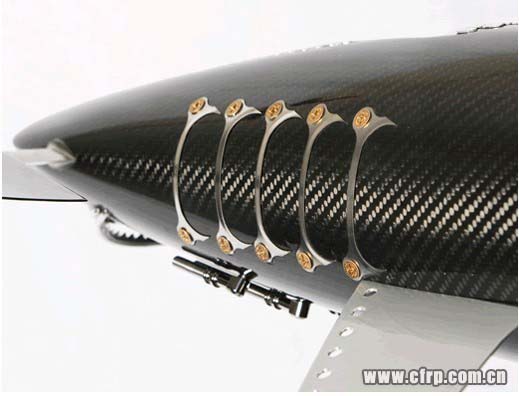
前不久, 他刚从本田退休,现在手头已经有18 张订单了—罗斯·布朗想要一个跟获奖的锦鲤一模一样的复制品。你或许以为离开F1 赛场会让人变得无所事事,四处寻找竞争的刺激,然而看看阿拉斯泰尔·吉布森,他却沉醉在自己新开辟的艺术世界中不能自拔。
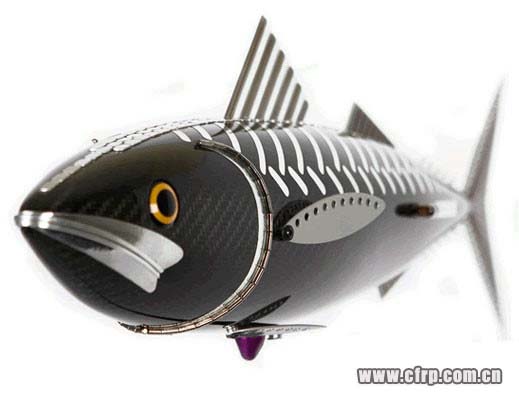
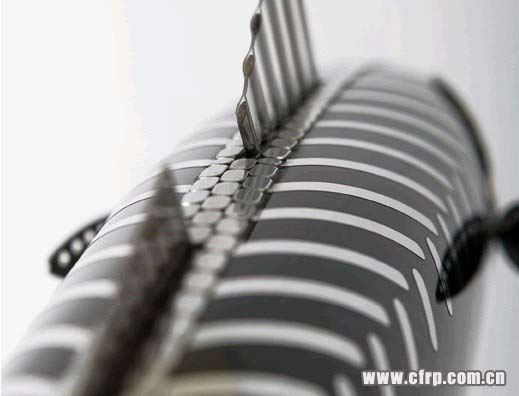
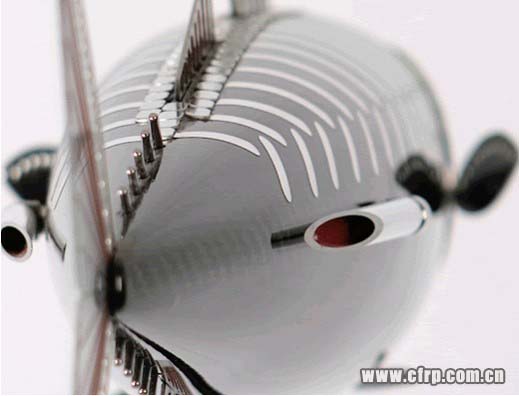
设计师介绍:
Alastair Gibson
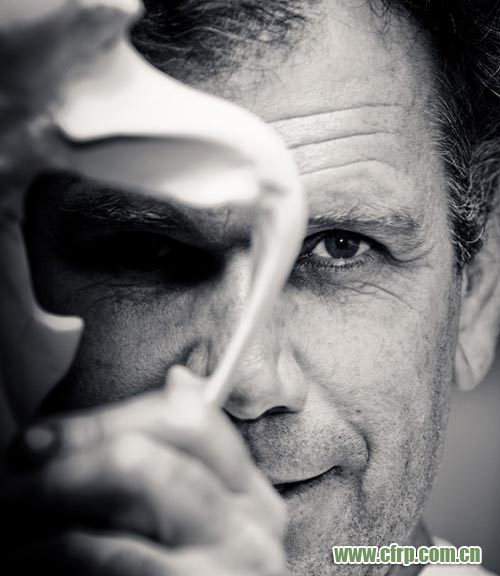
From Formula 1 to fish
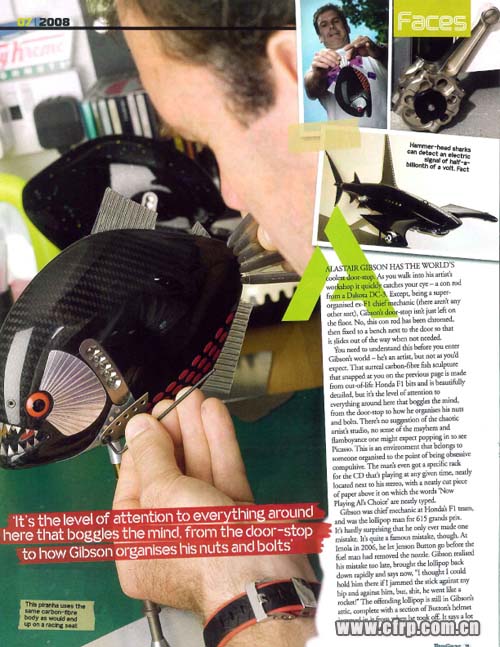
Giving up a glamorous and lucrative job travelling the world as chief mechanic of a Formula 1 team to become a sculptor is, at first glance, quite an unusual move. But for Alastair Gibson it represented an opportunity to combine his twin passions of motor sport and sculpture, while being able to spend more time with his family.
It is not just the fact that Gibson, 47, has chosen to be a sculptor that is unusual, it is the medium he has opted to work with — carbon fibre.
While there are examples of other contemporary artists who have used it, he is unique as a specialist carbon artist. Carbon fibre provides the common link between his old and new lives, since it is used extensively in the manufacture of Formula 1 cars.
An incredibly versatile material, it is extremely light but strong and, with its distinctive pattern derived from the weave of the carbon fibre sheet, it is visually striking, too.
Alastair was chief mechanic for the Brackley-based team BAR-Honda, which subsequently morphed into BrawnGP, winning eight Grands Prix and the World Championship driver’s and constructor’s titles in 2009 with Jenson Button and Rubens Barichello.
Although Alastair announced his decision to leave at the end of 2007, he stayed on for the first three races of 2008, in order to help his successor make a smooth transition. In early April 2008, he became a full-time carbon artist.
“I would walk around the parts stores and pick up little pieces made of titanium. I would think about the work in them, the accuracy and how beautiful they were,” Alastair said. “At the end of the season they would be scrapped. I thought ‘They shouldn’t be thrown away, they need to be seen and appreciated’. So I started collecting them and thinking about how they could be displayed.”
The seeds for his switch had actually been sown long before then. Born in Johannesburg, South Africa, the diversity of marine life he saw when on family holidays inspired him to begin carving wood.
He even took after-school art classes at one stage but, with a racing mechanic — Alastair Snr — as a father, he seemed pre-destined to work in motor sport.
Training as a balance engineer — ensuring engines run smoothly and without vibrations — Gibson Jnr arrived in Europe in 1987 to see if he could make his way in racing. He quickly worked his way through the ranks until, in 1995, he joined Oxfordshire-based Formula 1 team, Benetton.
It was around this time that he first got the idea for his sculptures. “I would walk around the parts stores and pick up little pieces made of titanium. I would think about the work in them, the accuracy and how beautiful they were,” Alastair said.
“At the end of the season they would be scrapped. I thought ‘They shouldn’t be thrown away, they need to be seen and appreciated’. So I started collecting them and thinking about how they could be displayed.”
Taking the marine life he saw on childhood holidays as inspiration, he began making his first pieces incorporating these components.
“On weekends off I started doing sculptures. Every year I used to do three or four pieces and give them to girlfriends or my sisters.”
A move to the BAR team sponsored by British American Tobacco, owner of the Lucky Strike brand of cigarettes, presented him with his big breakthrough opportunity.
In 2003, BAT backed a series of exhibitions, called Tribe Art, featuring the art of people working for the company and three of Alastair’s carbon fibre pieces — a tiger shark, white shark and thresher shark— were chosen. Starting in London, the exhibitions visited Tokyo, Milan, Frankfurt, Jakarta and Rome. The exposure prompted further interest in his work, including a commission from team driver Rubens Barichello for a piranha and, before long, Alastair was being asked regularly to create sculptures for clients.
Although his range initially had a marine theme — the brown trout, hammerhead shark, mackerel, mako shark and the piranha —he has since branched out into the field of natural history with a human skull and plans further additions including a lion skull in the future.
Each side of the fish body is made of carbon fibre, using sheets pre-impregnated with resin, which sets hard after a process of vacuum-sealing and baking in an oven. The Formula 1 components are used to create the distinctive detail features.
Alastair meticulously records information about what the part is, which car it came from and when it was used and the finished pieces are mounted on a Permaglass board cut from the underfloor planks fitted beneath the F1 cars. The resulting fusion of marine life and hi-tech is visually spectacular.
The human skull is made using a slightly different process, being machined from a solid block consisting of 318 sheets of carbon fibre. The end result is lacquered, giving it a beautiful reflective finish which, combined with the pattern from the layers of sheets, is arresting from every angle.
Alastair’s work has been exhibited around the world, from the Grosvenor House and Chelsea Art Fairs in London to the Houtbay Gallery in Cape Town and, most recently, the Monaco Yacht Show, where his pieces were displayed on the Camper & Nicholsons luxury yacht, Sherakhan.
He also held a show in August at the space venue in his home town Brackley. The best part of his new life is being able to spend more time at home with his wife, book designer Carolyn, 45, and son William, seven.
“I like to be able to say ‘Let’s go for a bike ride’ or do something together. For the first five years of his life I was cavorting around the world, I wasn’t having an influence on how he was growing up or on family life,” he said.
He also has more time to indulge in his other hobbies of rebuilding vintage motor cycles and visiting air shows.
Now he is ready to take the next step along his career path, which includes moving into a new studio with more room to create his sculptures — a giant manta ray and a pike are on the cards — meet potential clients and display some of his work.
He is also looking for a high-end venue such as a gallery or dealer in Oxford or London where he can exhibit his pieces on a permanent basis.
What seemed like a radical career change actually makes perfect sense. His art has provided him with an ideal outlet for his creativity, while capitalising on his background in the high-tech world of Formula 1.

阿拉斯泰尔·吉布森原来是本田车队的工程师,现在改行设计碳纤维鱼。这到底是怎么回事?让我们来一探究竟。 阿拉斯泰尔·吉布森的门吸在我眼中应该能算得上世界首酷了。走进这位艺术家的工作室,这个小玩意儿迅速吸引住了我的眼球——它其实是来自D C -3 飞机的连杆。作为超级细致的前F1 首席工程师,阿拉斯泰尔·吉布森并没有把门吸贴在地板上。这个镀铬连杆被巧妙地安装在门边上。



的那条超现实主义风格的碳纤维鱼,似乎随时准备猛咬你一大口。它的材料来自本田F1 赛车的废弃零部件,但做工精美细致。从门吸到工作室里的一切细节布置,无不牢牢地抓着我的视线,一时间我的大脑有些短路。





阿拉斯泰尔·吉布森的F1 生涯让他拥有了出众的技术知识,这一点对他制作千奇百怪的艺术品而言至关重要。阿拉斯泰尔·吉布森利用废弃的本田F1 赛车零件来打点细节, 因此装有变速器零件(当然,每一个都有编号)的盒子随处可见—食人鱼的鼻孔由车身上的扣件制成,牙齿是铝制的,身下的支架则来自旧的换挡杆。他对所有素材的了解令人叹为观止,对每一个部件的位置都了如指掌。


找到这些零件其实花不了多少时间。目前,他仍然会在每周抽出1 天的时间来为本田担任顾问,因此可以轻松获取各种多余的零件。制作各式各样的模具并最终构造出碳纤维模型的形状才是最花时间的。首先,阿拉斯泰尔·吉布森用一种轻质木材雕刻出基本的形状,这只需一把小刀即可完成。对于30 厘米长的食人鱼,这个过程很容易,阿拉斯泰尔·吉布森还打算在这个夏天制作一条长达两米的灰鲭鲨。“在雕刻的过程中,需要很强的自制力,否则很快就会焦躁不安,最后只能雕出一根巨大的牙签。”

不过这种轻质木材不能直接用来制做碳纤维的模具。把轻质木材用碳纤维包起来,放进用于蒸煮工业材料的高压锅,压力会把木材压平。所以阿拉斯泰尔·吉布森先用计算机分析木质鱼的原型,然后把坐标值输入铣床,通过铣床将一团高科技的T B 650 树脂塑造成鱼形。这样就有了最终的模具,在里面衬入经过预先处理的碳纤维,放进高压锅里,分别铸出鱼身的两半。能理解吗?好,接下来把表面打磨光滑,填充进可膨胀的塑料泡沫,再把两半粘起来,将废弃的F1 赛车零件装饰在上面。碳纤维鱼就做好了!

前不久, 他刚从本田退休,现在手头已经有18 张订单了—罗斯·布朗想要一个跟获奖的锦鲤一模一样的复制品。你或许以为离开F1 赛场会让人变得无所事事,四处寻找竞争的刺激,然而看看阿拉斯泰尔·吉布森,他却沉醉在自己新开辟的艺术世界中不能自拔。



设计师介绍:
Alastair Gibson

From Formula 1 to fish

Giving up a glamorous and lucrative job travelling the world as chief mechanic of a Formula 1 team to become a sculptor is, at first glance, quite an unusual move. But for Alastair Gibson it represented an opportunity to combine his twin passions of motor sport and sculpture, while being able to spend more time with his family.
It is not just the fact that Gibson, 47, has chosen to be a sculptor that is unusual, it is the medium he has opted to work with — carbon fibre.
While there are examples of other contemporary artists who have used it, he is unique as a specialist carbon artist. Carbon fibre provides the common link between his old and new lives, since it is used extensively in the manufacture of Formula 1 cars.
An incredibly versatile material, it is extremely light but strong and, with its distinctive pattern derived from the weave of the carbon fibre sheet, it is visually striking, too.
Alastair was chief mechanic for the Brackley-based team BAR-Honda, which subsequently morphed into BrawnGP, winning eight Grands Prix and the World Championship driver’s and constructor’s titles in 2009 with Jenson Button and Rubens Barichello.
Although Alastair announced his decision to leave at the end of 2007, he stayed on for the first three races of 2008, in order to help his successor make a smooth transition. In early April 2008, he became a full-time carbon artist.
“I would walk around the parts stores and pick up little pieces made of titanium. I would think about the work in them, the accuracy and how beautiful they were,” Alastair said. “At the end of the season they would be scrapped. I thought ‘They shouldn’t be thrown away, they need to be seen and appreciated’. So I started collecting them and thinking about how they could be displayed.”
The seeds for his switch had actually been sown long before then. Born in Johannesburg, South Africa, the diversity of marine life he saw when on family holidays inspired him to begin carving wood.
He even took after-school art classes at one stage but, with a racing mechanic — Alastair Snr — as a father, he seemed pre-destined to work in motor sport.
Training as a balance engineer — ensuring engines run smoothly and without vibrations — Gibson Jnr arrived in Europe in 1987 to see if he could make his way in racing. He quickly worked his way through the ranks until, in 1995, he joined Oxfordshire-based Formula 1 team, Benetton.
It was around this time that he first got the idea for his sculptures. “I would walk around the parts stores and pick up little pieces made of titanium. I would think about the work in them, the accuracy and how beautiful they were,” Alastair said.
“At the end of the season they would be scrapped. I thought ‘They shouldn’t be thrown away, they need to be seen and appreciated’. So I started collecting them and thinking about how they could be displayed.”
Taking the marine life he saw on childhood holidays as inspiration, he began making his first pieces incorporating these components.
“On weekends off I started doing sculptures. Every year I used to do three or four pieces and give them to girlfriends or my sisters.”
A move to the BAR team sponsored by British American Tobacco, owner of the Lucky Strike brand of cigarettes, presented him with his big breakthrough opportunity.
In 2003, BAT backed a series of exhibitions, called Tribe Art, featuring the art of people working for the company and three of Alastair’s carbon fibre pieces — a tiger shark, white shark and thresher shark— were chosen. Starting in London, the exhibitions visited Tokyo, Milan, Frankfurt, Jakarta and Rome. The exposure prompted further interest in his work, including a commission from team driver Rubens Barichello for a piranha and, before long, Alastair was being asked regularly to create sculptures for clients.
Although his range initially had a marine theme — the brown trout, hammerhead shark, mackerel, mako shark and the piranha —he has since branched out into the field of natural history with a human skull and plans further additions including a lion skull in the future.
Each side of the fish body is made of carbon fibre, using sheets pre-impregnated with resin, which sets hard after a process of vacuum-sealing and baking in an oven. The Formula 1 components are used to create the distinctive detail features.
Alastair meticulously records information about what the part is, which car it came from and when it was used and the finished pieces are mounted on a Permaglass board cut from the underfloor planks fitted beneath the F1 cars. The resulting fusion of marine life and hi-tech is visually spectacular.
The human skull is made using a slightly different process, being machined from a solid block consisting of 318 sheets of carbon fibre. The end result is lacquered, giving it a beautiful reflective finish which, combined with the pattern from the layers of sheets, is arresting from every angle.
Alastair’s work has been exhibited around the world, from the Grosvenor House and Chelsea Art Fairs in London to the Houtbay Gallery in Cape Town and, most recently, the Monaco Yacht Show, where his pieces were displayed on the Camper & Nicholsons luxury yacht, Sherakhan.
He also held a show in August at the space venue in his home town Brackley. The best part of his new life is being able to spend more time at home with his wife, book designer Carolyn, 45, and son William, seven.
“I like to be able to say ‘Let’s go for a bike ride’ or do something together. For the first five years of his life I was cavorting around the world, I wasn’t having an influence on how he was growing up or on family life,” he said.
He also has more time to indulge in his other hobbies of rebuilding vintage motor cycles and visiting air shows.
Now he is ready to take the next step along his career path, which includes moving into a new studio with more room to create his sculptures — a giant manta ray and a pike are on the cards — meet potential clients and display some of his work.
He is also looking for a high-end venue such as a gallery or dealer in Oxford or London where he can exhibit his pieces on a permanent basis.
What seemed like a radical career change actually makes perfect sense. His art has provided him with an ideal outlet for his creativity, while capitalising on his background in the high-tech world of Formula 1.